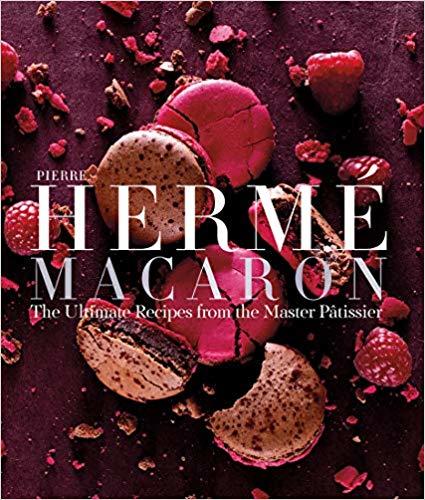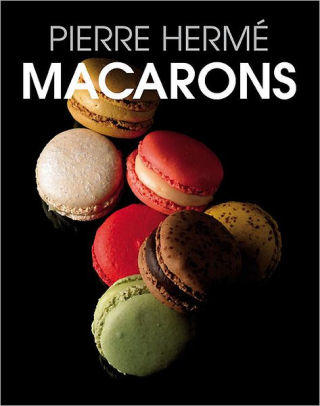
TexasMBA02
participating member-
Posts
10 -
Joined
-
Last visited
Recent Profile Visitors
The recent visitors block is disabled and is not being shown to other users.
-
Ganache ratios for proper consistency (macaron filling)?
TexasMBA02 replied to a topic in Pastry & Baking
I did check out that Instagram account and there are some really interesting recipes on there. Thank you for alerting me to that option. -
Ganache ratios for proper consistency (macaron filling)?
TexasMBA02 replied to a topic in Pastry & Baking
@gfron1, that is good to know. I'm glad I'm not the only one. After studying that book a decent amount, there seem to be some inconsistencies that are a bit perplexing. @Pastrypastmidnight & @keychris, I wonder if part of the difference is application. My sense is as you mature the macarons in the fridge a day or two, the filling tends to soften the shells and meld a bit. Presumably then, the opposite is happening as moisture is wicked out of the filling it should firm up a bit. I tried his recipe for pistachio ganache and it is a 1:1 ratio (with some pistachio paste) and it set up pretty nicely once the macarons had matured in the fridge. For further R&D, I will probably continue to push the ratio higher because one thing that is true is that as I'm filling them, it is pretty loose and so keeping them aesthetically pleasing is more challenging. Thanks again for all the help. -
Ganache ratios for proper consistency (macaron filling)?
TexasMBA02 replied to a topic in Pastry & Baking
@Jim D., Thank you for the thoughtful response. While it never occurred to me that the act of infusion could alter the ratios, the variation of ingredients did. I followed the recipe exactly, other than using a cream with a slightly higher fat content (36% per the carton) vs the light whipping cream it called for (32% - 35%). In light of how infusion may change the ratios, would weighing the ingredients post-infusion accommodate that potential better? Knowing that I can always remelt and add more of one of the ingredients is helpful. Regretfully, I did throw away the original attempt. But I did redo it last night STARTING with a ratio of 1.15:1 and I think it turned out very well. And I would love any recommendations for other brands of chocolate to try. The reason I went with Valhrona was to stay as faithful to the recipe as possible. I had attempted to use some Callebaut white chocolate callets in similar recipes in the past and found the flavor overwhelming and unpleasant. Thanks again. -
Ganache ratios for proper consistency (macaron filling)?
TexasMBA02 replied to a topic in Pastry & Baking
Thank you. Is it fair to say 1:1 is a decent ratio for white chocolate? -
Ganache ratios for proper consistency (macaron filling)?
TexasMBA02 replied to a topic in Pastry & Baking
I am using Valrhona 35% white chocolate as called for by the recipe. Not sure where that ranks for quality of chocolate, but it is brutally expensive, at least in my opinion. -
I'm a home cook, but have been working on perfecting macarons recently. My question deals with appropriate ratios for ganache fillings based on fat content of the cream and chocolate percentages. My recent mishap came from a Pierre Herme recipe for coffee ganache. After making the ganache, I refrigerated it overnight and it was way too thin. You could pour it. The ratio for that was: 450g 35% White Chocolate 520g Light Whipping Cream (32%-35% fat) So roughly 1:1.15 chocolate to cream. Full disclosure, given availability in the grocery stores, I was using heavy whipping cream which was 36% fat. If anything, I'd think that it would make it more stable, not less. I'm open to the idea that there was just a misprint or error. Elsewhere in the cookbook, for similar ganaches there are ratios of 1.12:1. One potential thought was the recipe called for boiling the cream and infusing it with coffee. I probably got to something closer to a scald. Is it possible that the boiling would reduce the cream further and make a thicker finished product? Another possibility is that with more fat content, the cream presumably is less dense and therefore the weight measurements translates into higher volume? Again, these seem like very minor differences. Then thinking through to other recipes, I was hoping to get some sense of how you can mathematically derive the appropriate ratios. I will be doing dark chocolate ganaches as well and again his recipes call for light whipping cream, which is challenging to locate now, and a specific 68% chocolate. I'd like to get some sense of how sensitive the finished product is to deviations from those percentages. For example, if I use a 36% heavy whipping cream and a 70% chocolate, is the final consistency likely to be noticeably different than expectations and how can I anticipate how to adjust the recipe? My sense is that most of his stuff is overly pretentious and that small deviations likely wouldn't have massive ramifications, but I want to make sure because each ingredient IS a meaningful financial investment. Thank you in advance,
-
Ok. That makes sense. Although, I’ve always heard you don’t want to add any liquid to the macarons so I’m intrigued by that approach. I’m getting his cookbook soon and I’m sure it is all in there. I believe his base recipes are 300g almonds, 300g powdered sugar, 220g egg whites. Makes about 80 halves.
-
Great. Thank you. That is super helpful.
-
I've recently become somewhat obsessed with trying to perfect these awesome little cookies. I've stumbled upon some of Pierre Herme's recipes and they all look reasonably straightforward. My question is around colorings. There are a few things that caught my attention: 1) He doesn't specify gel or powder. I assume from the amounts to use (by weight) he's referencing gel, which leads me to... 2) The amounts seem egregious. In his preamble in one of his books he says to use colorings sparingly, but then his recipes seem to call for relatively large amounts of coloring. Many of his recipes have anywhere from 5 to 20 grams of food coloring for a standard batch of macarons. 20 grams is essentially an entire .75 oz bottle of gel paste coloring. Is he actually suggesting that much coloring for a batch of macarons? Thanks, Dave
-
After batting about .500 with my previous approach to macarons, I came across Pierre Herme's base recipe online. After two flawless batches of macarons, I've been re-energized to continue to work at mastering them. Specifically, I want to try more of his recipes. My conundrum is that he has, as far as I can tell, two macaron cookbooks and I don't know which one I should get. I can't tell if one is just an updated version of the other or a reissue or what the differences really are. I was hoping somebody had some insight. I have searched online and haven't seen both books referenced in the same context or contrasted at all. This one appears to be older. And this one appears to be the newer of the two. Any insight would be helpful. Thanks,



